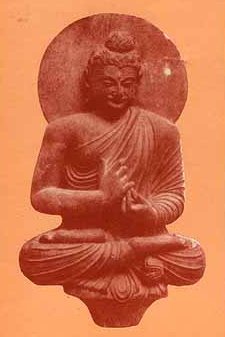Esa, Esha, Eṣa: 13 definitions
Introduction:
Esa means something in Hinduism, Sanskrit, Buddhism, Pali, Marathi, Jainism, Prakrit, Hindi. If you want to know the exact meaning, history, etymology or English translation of this term then check out the descriptions on this page. Add your comment or reference to a book if you want to contribute to this summary article.
The Sanskrit term Eṣa can be transliterated into English as Esa or Esha, using the IAST transliteration scheme (?).
Languages of India and abroad
Pali-English dictionary
Source: BuddhaSasana: Concise Pali-English Dictionaryesa : (euphonic form of eso), that person.
Source: Sutta: The Pali Text Society's Pali-English Dictionary1) Esa, 2 (adj.) = esin Sn.286. (Page 162)
2) Esa, 1 see etad. (Page 162)

Pali is the language of the Tipiṭaka, which is the sacred canon of Theravāda Buddhism and contains much of the Buddha’s speech. Closeley related to Sanskrit, both languages are used interchangeably between religions.
Marathi-English dictionary
Source: DDSA: The Molesworth Marathi and English Dictionaryēsa (एस).—f (Properly vēsa) The gate (of a town, village, yard).
Marathi is an Indo-European language having over 70 million native speakers people in (predominantly) Maharashtra India. Marathi, like many other Indo-Aryan languages, evolved from early forms of Prakrit, which itself is a subset of Sanskrit, one of the most ancient languages of the world.
Sanskrit dictionary
Source: DDSA: The practical Sanskrit-English dictionaryEṣa (एष).—a.
1) Desirable, to be desired.
2) Gliding, running; epithet of Viṣṇu.
-ṣaḥ 1 Running or hastening towards.
2) Seeking.
3) Wish, choice.
-ṣā Wish, desire.
Source: Cologne Digital Sanskrit Dictionaries: Shabda-Sagara Sanskrit-English DictionaryEṣā (एषा).—f.
(-ṣā) Desire. E. iṣ to wish, aṅ and ṭāp aff.
Source: Cologne Digital Sanskrit Dictionaries: Cappeller Sanskrit-English DictionaryEṣa (एष).—1. [adjective] rushing on, eṣa [masculine] as subst.
--- OR ---
Eṣa (एष).—2. [masculine] seeking, looking for; wish, desire.
Source: Cologne Digital Sanskrit Dictionaries: Monier-Williams Sanskrit-English Dictionary1) Eṣa (एष):—[from eṣ] 1. eṣa mfn. gliding, running, hastening, [Ṛg-veda]
2) 2 ([nominative case] m. of etad q.v.)
3) 3. eṣa mfn. ([from] √3. iṣ) ifc. seeking, [Śatapatha-brāhmaṇa xiii]
4) m. the act of seeking or going after, [Ṛg-veda x, 48, 9]
5) (eṣa), wish, option, [Ṛg-veda i, 180, 4], (cf. svaīṣa)
6) Eṣā (एषा):—[from eṣa] f. wish, [cf. Lexicographers, esp. such as amarasiṃha, halāyudha, hemacandra, etc.];
7) Eṣa (एष):—cf. [Zend] aesha; O.H.G. ērā.
Source: Cologne Digital Sanskrit Dictionaries: Yates Sanskrit-English DictionaryEṣā (एषा):—(ṣā) 1. f. Desire.
[Sanskrit to German]
Sanskrit, also spelled संस्कृतम् (saṃskṛtam), is an ancient language of India commonly seen as the grandmother of the Indo-European language family (even English!). Closely allied with Prakrit and Pali, Sanskrit is more exhaustive in both grammar and terms and has the most extensive collection of literature in the world, greatly surpassing its sister-languages Greek and Latin.
Hindi dictionary
Source: DDSA: A practical Hindi-English dictionary1) Esa in Hindi refers in English to:—(nm) Jesus Christ..—esa (ईसा) is alternatively transliterated as Īsā.
2) Esa in Hindi refers in English to:—(a) such, of this type; -[vaisa] trifling, of no consequence; insignificant; [aisi] ([ki]) [taisi] an abusive expression (directed towards something or someone); down (with him); —•[karana/0 mem jane dena] damn it, let it go to hell, to damn with feint praise..—esa (ऐसा) is alternatively transliterated as Aisā.
...
Prakrit-English dictionary
Source: DDSA: Paia-sadda-mahannavo; a comprehensive Prakrit Hindi dictionary1) Esa (एस) in the Prakrit language is related to the Sanskrit word: Eṣ.
2) Esa (एस) also relates to the Sanskrit word: Eṣ.
3) Esa (एस) also relates to the Sanskrit word: Eṣya.
Prakrit is an ancient language closely associated with both Pali and Sanskrit. Jain literature is often composed in this language or sub-dialects, such as the Agamas and their commentaries which are written in Ardhamagadhi and Maharashtri Prakrit. The earliest extant texts can be dated to as early as the 4th century BCE although core portions might be older.
Kannada-English dictionary
Source: Alar: Kannada-English corpusEśa (ಎಶ):—[noun] (correctly, ಯಶ [yasha]) favourable outcome or result; success.
--- OR ---
Esa (ಎಸ):—[noun] = (correctly, ಯಶ [yasha]) ಎಶ [esha].
Kannada is a Dravidian language (as opposed to the Indo-European language family) mainly spoken in the southwestern region of India.
See also (Relevant definitions)
Starts with (+78): Ecal, Ecam, Ecaman, Ecamanattuvam, Ecamanikkai, Ecamatti, Ecarkattu, Ecatavar, Esa-kokoo, Esaama, Esabagola, Esabakolu, Esabgol, Esabgolu, Esabha, Esaboddi, Esadi, Esadu, Esaga, Esagala.
Ends with (+2098): A-cata-bhata-pravesha, A-catta-bhatta-pravesha, Abahillesa, Abbesa, Abhangashlesha, Abhayadaganesha, Abhayadavighnesha, Abhinivesa, Abhipravesha, Abhisaranavesha, Abhitodevayajanamatradesha, Abhrakesha, Abhramujivitesha, Abhresha, Abhyasadesha, Abhyesha, Abishesha, Acalesha, Addavesha, Addesa.
Full-text (+537): Etad, Ayonika, Esh, Eta, Eshavira, Eshaka, Abhivadin, Eshya, Icam, Avasadaka, Gavesha, Anulomasamdhi, Esa-kokoo, Vinibandha, Atyesh, Jociyan, Icopanitatam, Svaisha, Juvalai, Vakmya.
Relevant text
Search found 139 books and stories containing Esa, Ēsa, Esha, Eṣa, Eṣā, Eśa; (plurals include: Esas, Ēsas, Eshas, Eṣas, Eṣās, Eśas). You can also click to the full overview containing English textual excerpts. Below are direct links for the most relevant articles:
Rig Veda (translation and commentary) (by H. H. Wilson)
Chandogya Upanishad (english Translation) (by Swami Lokeswarananda)
The Agni Purana (by N. Gangadharan)
Chapter 350 - The forms of completed euphonic combinations (sandhi)
Chapter 351 - Perfected forms of inflection in the nouns
Garga Samhita (English) (by Danavir Goswami)
Verse 2.8.24 < [Chapter 8 - Description of Seeing Lord Kṛṣṇa]
Verse 2.9.43 < [Chapter 9 - Brahmā’s Prayers]
Verse 1.11.70 < [Chapter 11 - Description of Śrī Kṛṣṇacandra’s Birth]
Shrimad Bhagavad-gita (by Narayana Gosvami)
Verse 1.41 < [Chapter 1 - Sainya-Darśana (Observing the Armies)]
Verse 3.37 < [Chapter 3 - Karma-yoga (Yoga through the Path of Action)]
Verse 10.40 < [Chapter 10 - Vibhūti-yoga (appreciating the opulences of the Supreme Lord)]